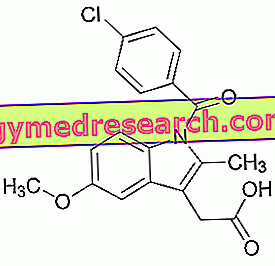Curated by Luigi Ferritto (1), Walter Ferritto (2) |
What is a Solitary Lung Nodule?
Solitary lung nodules (NPS), also called "coin lesions" by the Anglo-Saxons, are roundish lesions that do not exceed 3 cm in diameter, completely surrounded by normal lung parenchyma, without other associated anomalies.
The formations above 3 cm are more properly called masses and are often malignant (1, 2).
Article Index
Incidence of solitary lung nodules Characterization of nodules Evaluation of risk factors Choice of imaging modality Algorithms for setting up follow-up Solitary lung nodules: conclusionsIncidence
Solitary lung nodules can be found randomly, during imaging examinations conducted at the level of the neck, upper limbs, chest, abdomen, and are described in approximately 0.9-2% of all chest radiographs (3).

The spread of computed tomography (CT), a method characterized by a higher resolution capacity than radiography, has led to an increase in the frequency of detection of these nodules.
In a study conducted by CT scans for lung cancer screening in patients at risk, pulmonary nodules greater than 5 mm in diameter were described, in the initial assessment, in 13% of patients (4). In another study, which involved performing total body CT in adult subjects, pulmonary nodules were described in 14.8% of the examinations; however, this percentage also included nodules less than 5 mm in diameter (5). Overall, the estimated prevalence of solitary lung nodules would be included, according to various studies available in the literature, between 8% and 51% (6.7).
The American College of Chest Physicians (ACCP) does not recommend performing screening tests for lung cancer either in the general population or among smokers; the performance of these tests has not yet been able to achieve a decrease in mortality rates (8). The rational basis of the indication to closely monitor the lesions identified in a random way is that the diagnosis and treatment of early-stage lung cancer are able to obtain more favorable overall outcomes (9).
Characterization of nodules
A solitary lung nodule can be attributed to different causes. The first step in the clinical evaluation of these lesions is to define their benignity or malignancy. The most common benign etiologies include infectious granulomas and hematomas, while the most frequent malignant etiologies include primary lung carcinomas, carcinoid tumors, lung metastases (2).
Some features of the nodule that can be determined radiologically, such as shape and growth rate, are often useful to define the probability of a malignant lesion (10, 13).
An analysis conducted on the results collected from 7 different studies compared the dimensions of the nodule and the frequency of malignant lesions: lesions with a diameter less than 5 mm, a diameter between 5 mm and 1 cm, and a diameter greater than 2 cm, showed, respectively, malignancy rates lower than 1%, between 6% and 28%, and between 64 and 82% (10).
The morphological characteristics of the nodule correlated to the rate of malignancy include the density of the lesion, its margins and the presence or absence of calcifications. In general terms, dense lesions with a "solid" appearance are less frequently malignant than lesions that show "frosted glass" opacity (11). Another study showed that the presence of irregular margins is associated with a 4-fold increase in the probability of a malignant lesion; in fact, benign nodules are generally characterized by regular and well-defined margins (12). The presence of calcifications is generally considered a sign of kindness, especially in the presence of patterns that radiologists describe as "concentric", "central", "similar to popcorn", "homogeneous".
Also the speed of growth can be useful to determine the probability of malignancy of the nodule. Malignant lesions typically present a doubling time of between one month and one year; therefore, a nodule that has maintained a stable size for more than 1-2 years is more likely to be benign (10.13). It should be remembered that for spherical masses a 30% increase in the diameter corresponds to a doubling of the volume. Although masses with rapid volumetric doubling time (ie less than one month) are less frequently malignant, these masses must also be carefully evaluated in order to define the etiology, consequently the treatment.
However, there are numerous limitations in the size of a nodule: phlogistic changes at the periphery or scars and areas of compression of the parenchyma can lead to overestimation of growth, while the occurrence of haemorrhages, necrosis or cavitations can produce errors of different sign; even the partial volume effect can overestimate the size of a nodule, especially if thin layers are not used. It is not always easy to decide on the diameter measurement; this must be as accurate as possible, and must be obtained by calculating the average of at least two dimensions in two serial images. However, measurements based on diameter or area of section may not be able to distinguish between benign growth and malignant growth, as this can be asymmetric in the three dimensions of space; for this reason, and for the scarce capacity of the human eye to perceive the growth of a nodule when it is of sub-centimeter size, it is suggested the need to recognize volumetric measurement techniques, even if some author, through complex comparisons with "phantoms", ensures that a serial control with CT at an interval less than the doubling time (1 month) can recognize growth even in small subcentimetric nodules.
The dimensional stability of solid nodules for two years has been indicated as a benignity criterion, also not absolute, since nodules with very slow growth (doubling time> 700 days) may appear to be stable after 2 years.
The dynamic CT with enhancement after mdc is, in the field of diagnostic imaging, the test that provided the best sensitivity in the study of the pulmonary nodule (sensitivity from 98% to 100%; specificity from 29% to 93%), definitely towards a judgment of kindness when the increase in density after contrast medium is less than 15-20 HU. Magnetic resonance imaging showed a similar sensitivity, but a greater specificity of CT (19).



